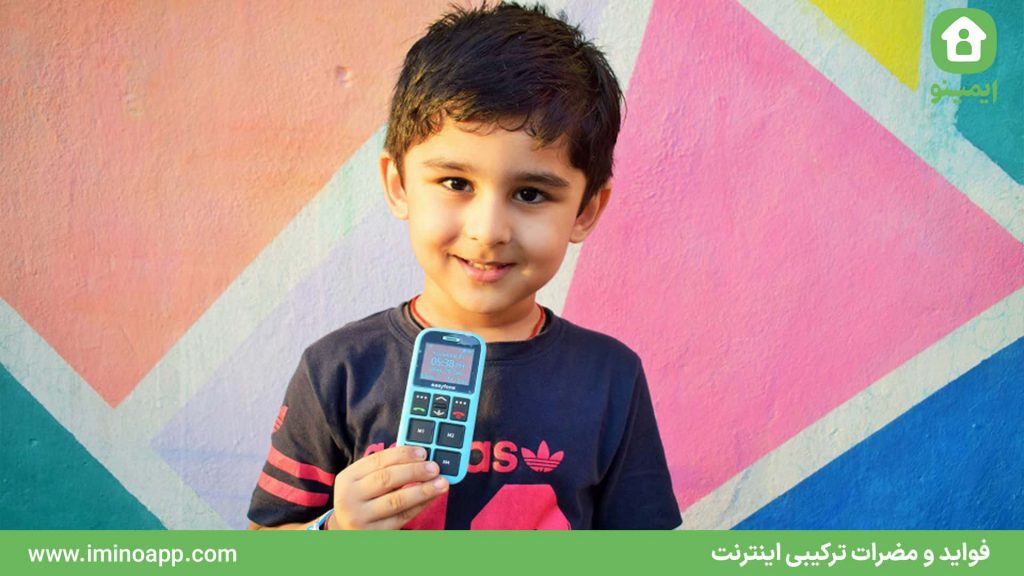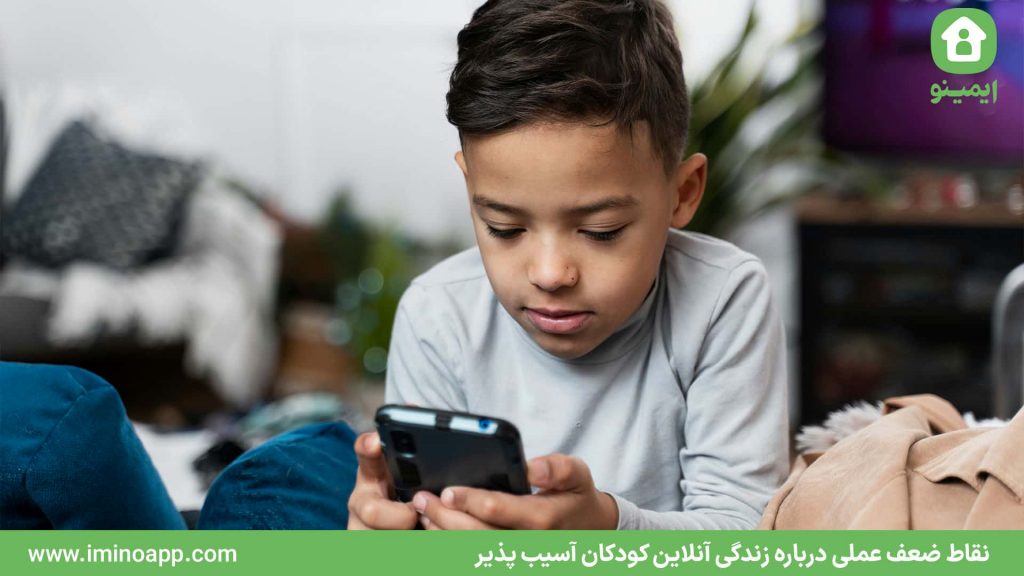Gaps in Performance and Operational Weaknesses Regarding the Online Lives of Vulnerable Children
Children at a young age are vulnerable and exposed to a wide range of teachings. Typically, in this process, they interact with various teams that can provide services to them. In this regard, a research study was conducted by Rebecca Lynn and colleagues (published in November 2021). The primary goal of this research was to examine how businesses related to children’s services become aware of digital life and incorporate it into their operations. In fact, the operational weaknesses regarding the online lives of vulnerable children are the main focus of this research.
Learn More: What is the Best Age to Buy a Phone for My Child? Buying the First Phone for Your Child
The Online Lives of Vulnerable Children (Digital Life)
Digital life is rapidly evolving, and its positive and negative effects are better understood these days. With these ever-increasing developments in the field of technology, the services that many vulnerable children need become more complex. This issue is particularly significant for some vulnerable teenagers, as they may specifically face the dangers of the online environment.
This study included 29 different businesses from local service providers that directly interact with children. The researchers conducted in-depth interviews with each of these companies to reach accurate conclusions. Experts consider the internet for young people as a “nearly limitless” arena and an “integral part of their lives.” Some acknowledge that this space affects the appearance and emotions of our children.

Weakness in the Field of Education
While educating about child protection in the virtual space is mandatory, digital risk education (online safety) is not. Most often, this is considered an “add-on” in the issue of child education. Previous studies have shown that when education is provided as a standalone session, it enhances the general knowledge of those involved in our children’s development. As a result, they can also improve their specialized knowledge related to their business.
Combined Benefits and Harms of the Internet
Participants in this qualitative study viewed the internet as a medium that “magnifies the good and bad of existing things.” This issue was also very important in examining operational weaknesses regarding the online lives of vulnerable children. They found that the internet provides children with “freedom and resources” and acknowledged that young people can “develop their voice” or “use games to escape from anything else they face.” They also feel that young people “have no time.” These individuals observed that young people, with the sense that there is an online refuge, seek “emotional connection” online (for example, it has become easier for queer youth).
They say that this environment also facilitates bullying and harassment, and young people engage in some risky activities due to fear of missing out or avoiding “social punishment.” Not seeing the other person’s reaction also plays a role in this issue. One of the participants in the research described the tension of the online environment as follows: “A space that can create positive social outcomes for that young person is the same space where someone else might consider bullying or harassing others.”
Lack of Knowledge About Children’s Abilities: Operational Weaknesses Regarding the Online Lives of Vulnerable Children
The participants in this study also considered the importance of online image and identity, pointing out how children “want to be important, relevant, powerful, and a complete person in the virtual space.” Despite these sensitive insights from the participants, their knowledge about online risks and harms and how they might affect vulnerable children was weak.
Additionally, the young people contributing to this research claimed that some teachers and counselors underestimate their ability to simply use the online space. In fact, the lack of attention to children’s abilities was one of the operational weaknesses regarding the online lives of vulnerable children, especially those who can advance their digital skills faster than adults expect.
The challenges ahead in identifying internal weaknesses and the set of definitions of online vulnerability used by participants indicate a significant risk of children falling through these gaps. These individuals acknowledge, “We don’t even have access to most of these young people unless they appear different, so we miss the children who maintain normal conditions at school.”

Removal of Communication Devices
A recurring theme during the supervision of online activities was removing phones from children and the complexities surrounding it. This can lead to the loss of a child’s source of support and social isolation. Some even come to believe that their identity is lost. For example, if these digital devices are purchased by parents, other challenges arise for guardians or teachers at school. They face legal complexities regarding ownership when confiscating phones, while also needing to consider their responsibilities.
Fear of Being Blamed: Operational Weaknesses Regarding the Online Lives of Vulnerable Children
A specific cultural concern is the issue of individual blame. “Children are afraid of being honest and hide what happened because parents consider it a mistake.” One of the participants in this study stated, “I think one of the greatest dangers of vulnerability for children in the online space is punishing them for something they didn’t cause.”
Lack of Awareness About Technology
The generational gap, coupled with adults’ lack of awareness and aversion to technology, is another issue addressed in examining operational weaknesses regarding the online lives of vulnerable children. Some individuals stated, “I completely avoid any activity related to technology.” Although participants said that “there are some professionals who have a good understanding of this space,” they also pointed out that “general practitioners were not fully aware of this space.” It is said that caregivers and social workers “are not fully prepared to use this space and are uninformed about internet safety.”
Inconsistency in Knowledge, Data, and Assessment
Participants identified gaps in their knowledge and differences in understanding the risks of the internet between children and adults as one of the weaknesses. These gaps arise due to a lack of data and assessment tools. One individual in this study stated, “I don’t think we always ask the right questions.” Others pointed to inconsistent collaboration and communication, especially regarding online risks: “Based on our experience with several service agencies, we guess that online work is really weak,” and “children are often offline.”
They referred to staff turnover and shortages, mentioning individuals who abandoned a service due to the lack of referral services and unsuccessful attempts to access services. However, the main reason for the poor collaboration of some agencies was data that “were not routinely collected and analyzed.”
Referral Limitations for Vulnerable Children
Collaboration issues between different institutions are also examined through the concept of referral and early discharge thresholds in discussing operational weaknesses regarding the online lives of vulnerable children, relying on the fact that young people must engage with restrictions: “We have built a very conservative defensive system that is about monitoring. Do you approve it or not?” And if [young people] do not approve this type of supervision, they are removed from the list. While positive data sharing is significant in terms of environmental protection and police checks, other challenges in data sharing through outdated systems persist: “Some systems cannot communicate with other entities.”

Selective Removal of Some Information
There are some digital factors that are not fully available to children, and some parts have been removed. This type of selective removal is also one of the weaknesses. There are serious concerns about the removal of information due to its selective nature. This is done to prevent serious issues or due to pressures to place children under restrictions. “Although many professionals know that there is a digital world, they do not consider it all-encompassing.” Worryingly, cases involving digital elements may lead to additional problems and, ultimately, poorer outcomes.
Lack of Accurate Assessment of Digital Life
Most importantly, there was a “glaring gap” in the assessment of children. Most assessment tools in use do not pay attention to digital life. There is routine and limited research regarding online risks. In fact, this issue “is not sufficiently incorporated into practices” and “depends on how proactive the social work team is.”
Some individuals in this study stated that addressing this issue in analyzing operational weaknesses regarding the online lives of vulnerable children creates an urgent need for change. “Currently, there is no data, and the tools are too general and not specialized. The data are at the level of simple notes and are only shared when trying to prove a hypothesis or conduct sampling.”
During the COVID-19 pandemic, there is evidence showing that young people are at risk of online harms, and incidents of online child abuse have significantly increased. As a result, we need many changes to address these operational weaknesses. When is a better time than today?
#Imino #ImWithYou